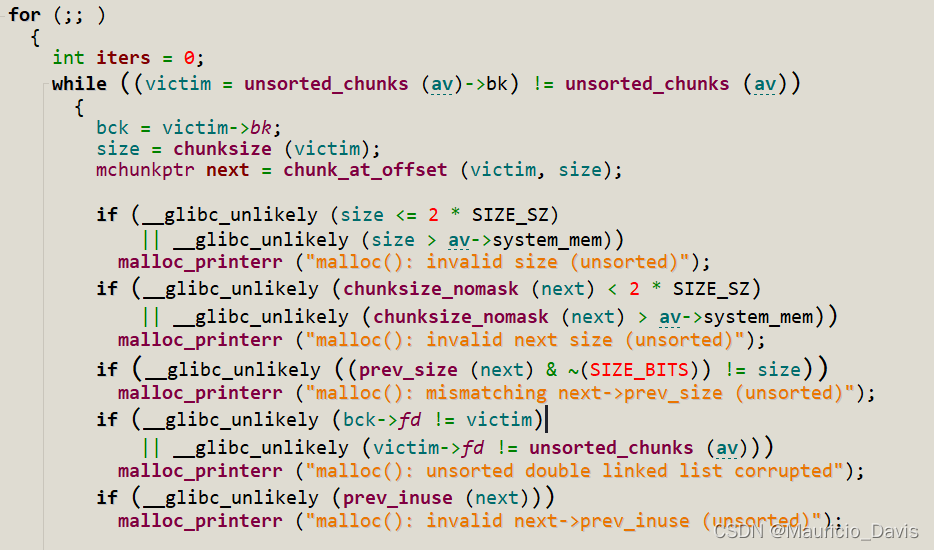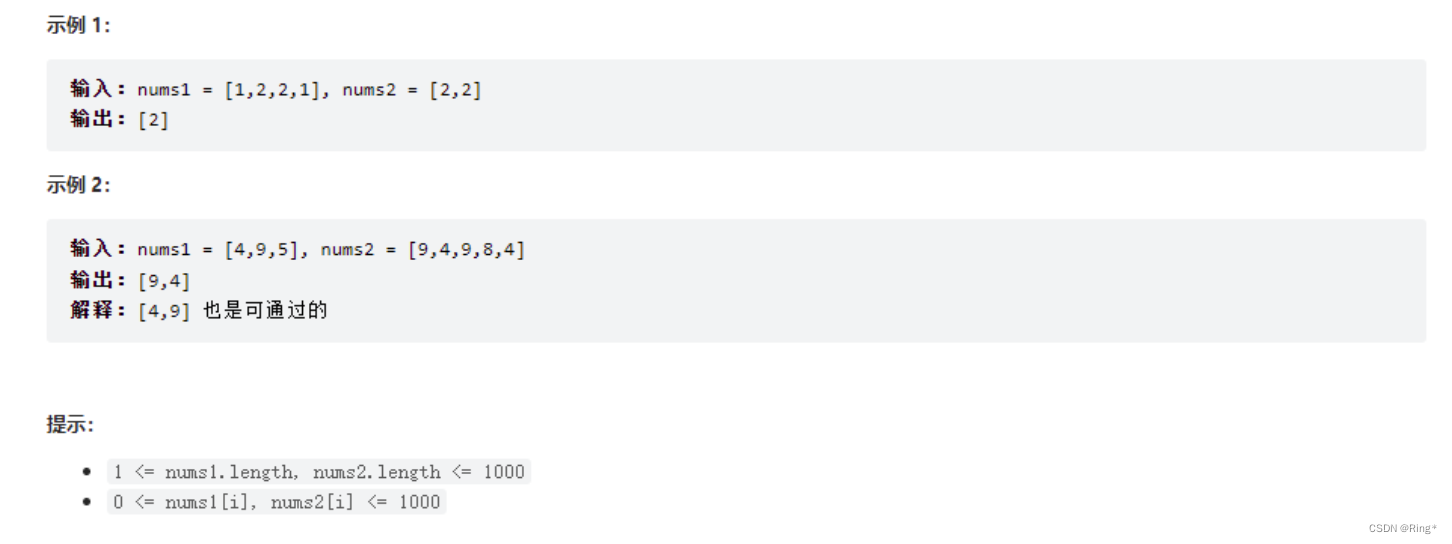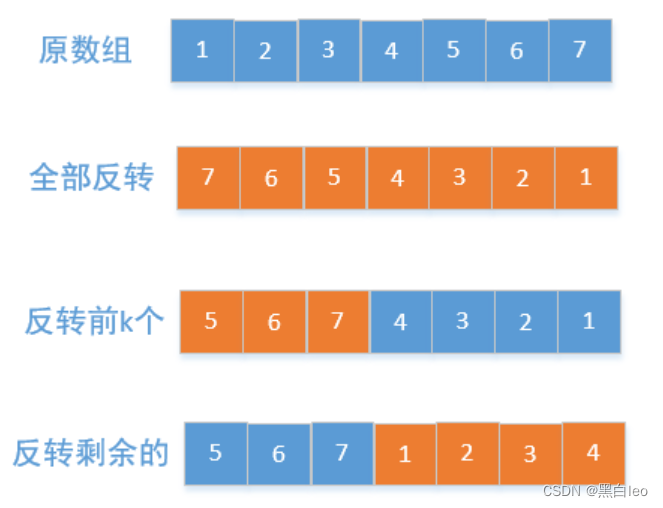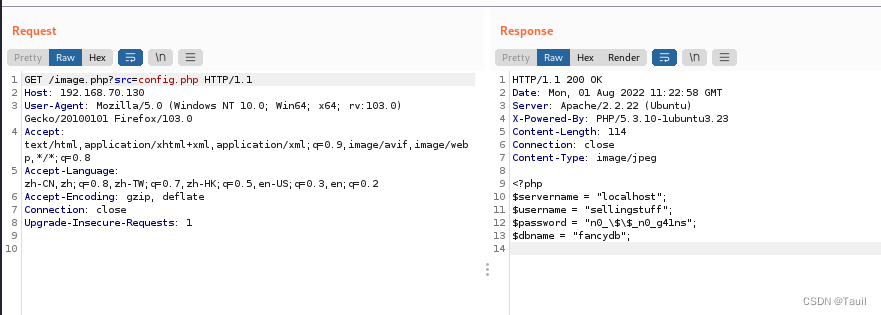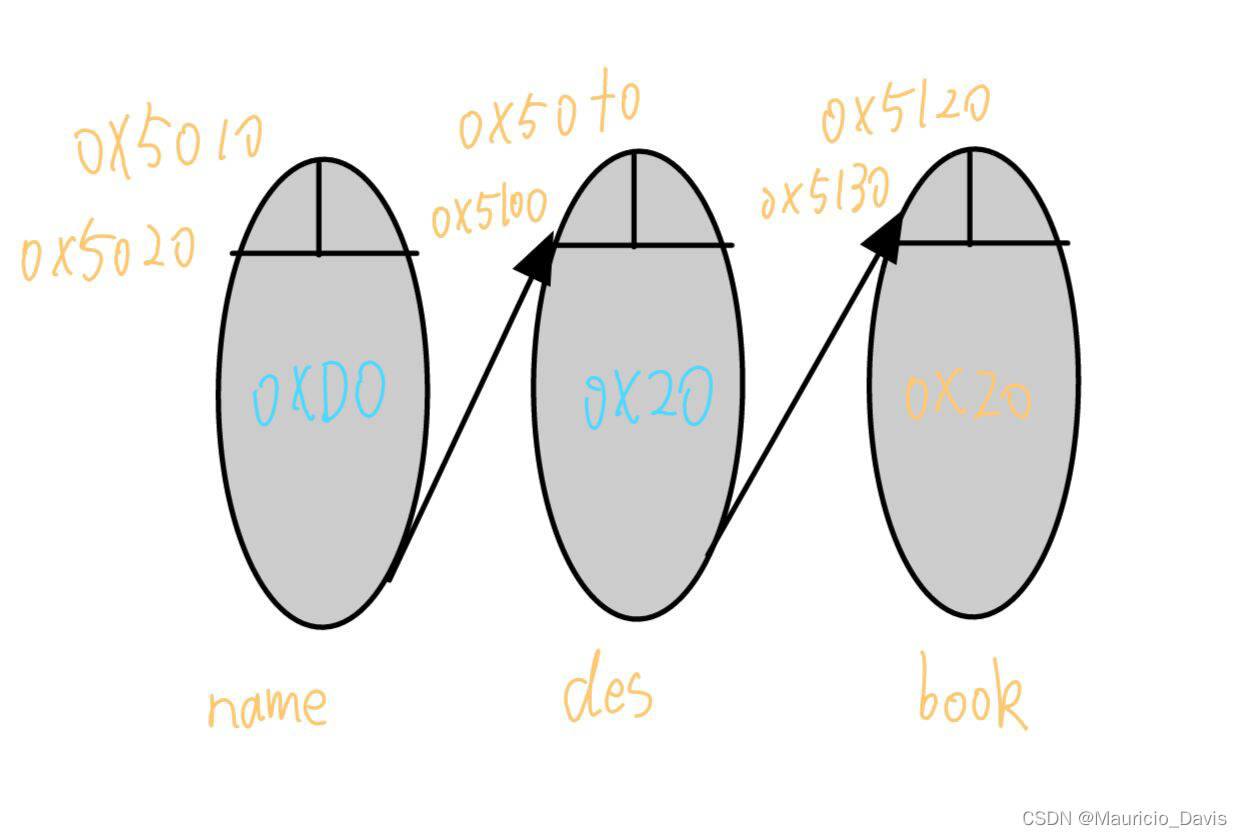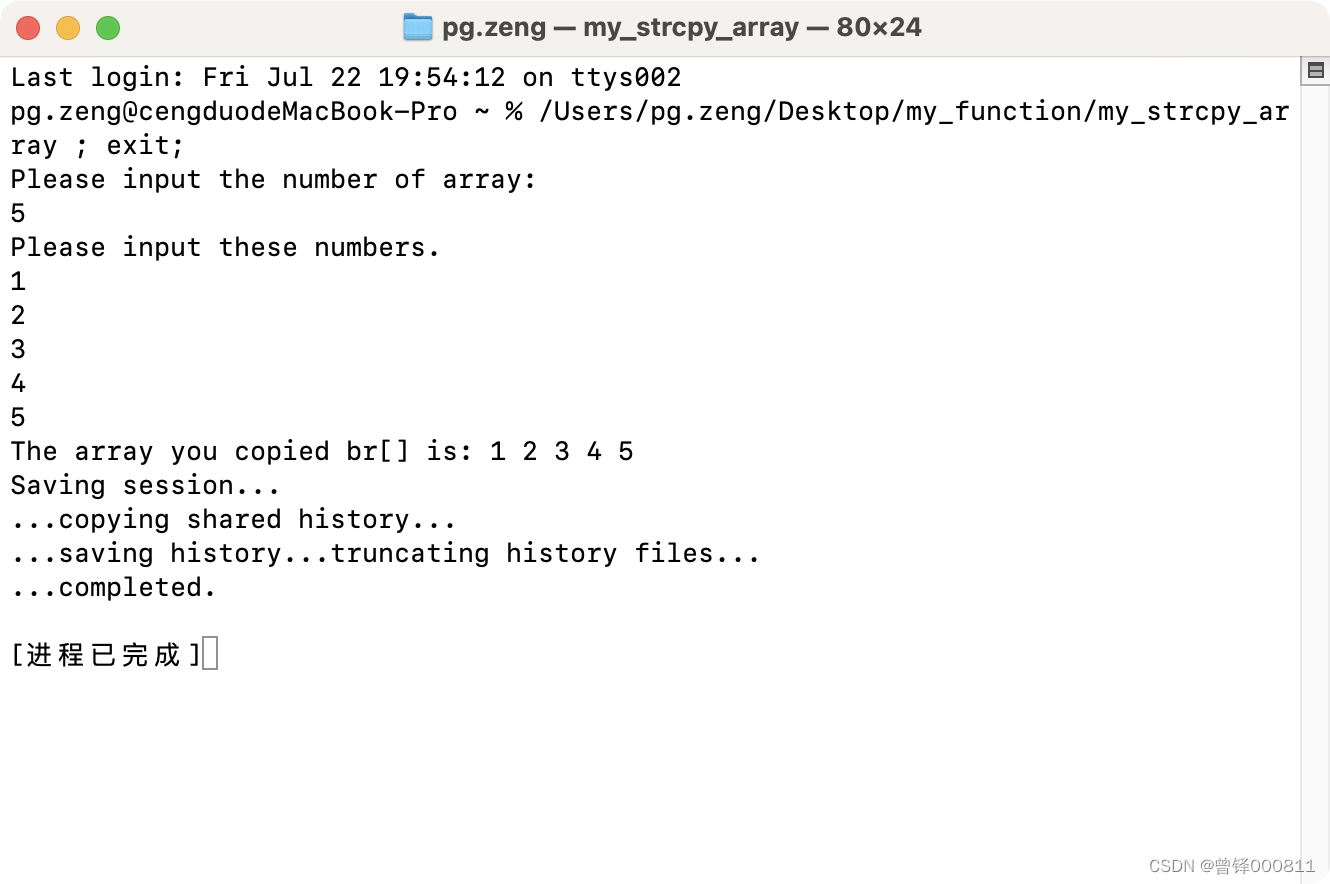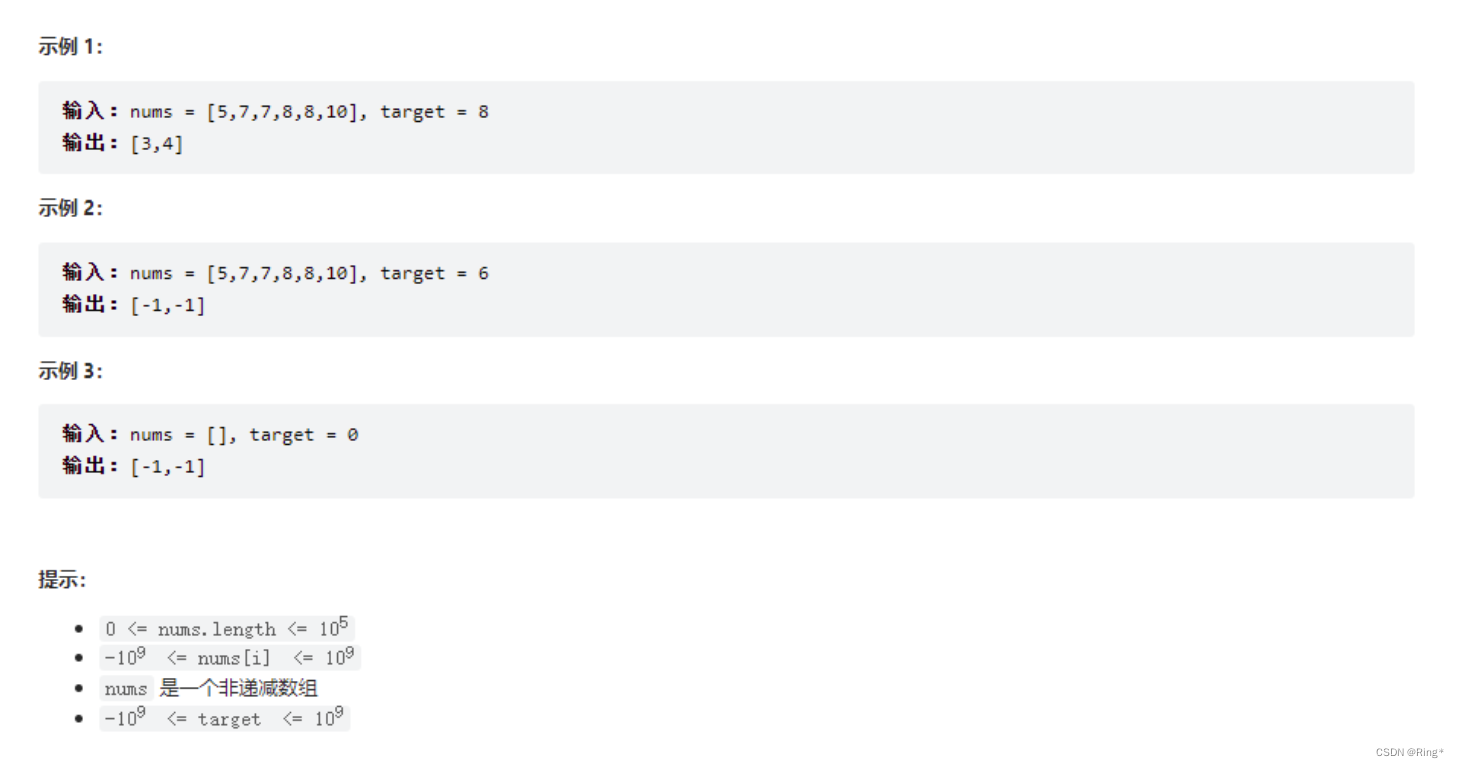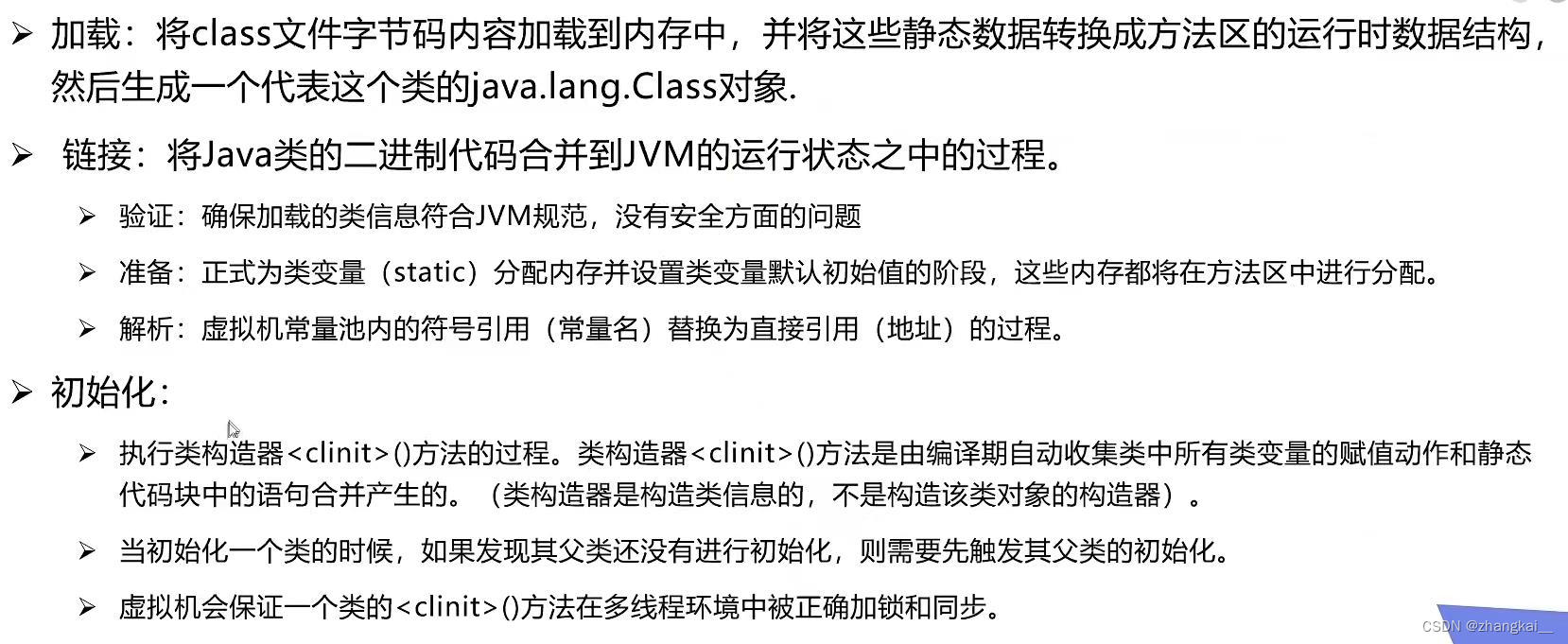当前位置:网站首页>Deep Learning Matlab Toolbox Code Comments
Deep Learning Matlab Toolbox Code Comments
2022-08-11 06:55:00 【Sherry shen】
test_example_CNN.m
%%=========================================================================
% 主要功能:在mnist数据库上做实验,Verify the validity of the toolbox
% 算法流程:1)Load training samples and test samples
% 2)设置CNN参数,并进行训练
% 3)进行检测cnntest()
% 注意事项:1)Memory overflow due to direct input of all test samples,Therefore, the test method of testing only one training sample at a time is adopted.
%%=========================================================================
%%
%%%%%%%%%%%%%%%%%%%%加载数据集%%%%%%%%%%%%%%%%%%%%
% Convert the grayscale value of the image to0~1,Because this code usessigmoid激活函数
load mnist_uint8;
train_x = double(reshape(train_x',28,28,60000))/255;
test_x = double(reshape(test_x',28,28,10000))/255;
train_y = double(train_y');
test_y = double(test_y');
%%
%%=========================================================================
%%%%%%%%%%%%%%%%%%%%Set Convolutional Neural Network Parameters%%%%%%%%%%%%%%%%%%%%
% 主要功能:训练一个6c-2s-12c-2sConvolutional Neural Networks of the form,The expected performance as follows:
% 1)Iterate once200秒左右,错误率大约为11%
% 2)The error rate after one hundred iterations is approximately1.2%
% 算法流程:1)Build and train a neural network,以CNNstored in the form of a structure
% 2)Test with known training samples
% 注意事项:1)Memory overflow was prompted when testing,Then, somehow, it didn't overflow again.,Estimated system memory threshold
%% The structure of the convolutional network is 6c-2s-12c-2s
% 1 epoch 会运行大约200s, 错误率大约为11%.而 100 epochs The error rate is approximately1.2%.
%%=========================================================================
rand('state',0)%The specified state make each run produces random results are the same
cnn.layers = {
struct('type', 'i') %输入层
struct('type', 'c', 'outputmaps', 6, 'kernelsize', 5) %卷积层
struct('type', 's', 'scale', 2) %下采样层
struct('type', 'c', 'outputmaps', 12, 'kernelsize', 5) %卷积层
struct('type', 's', 'scale', 2) %下采样层
};
% 这里把cnn的设置给cnnsetup,it builds a completeCNN网络,并返回
cnn = cnnsetup(cnn, train_x, train_y);
% 学习率 % 梯度下降的步长
opts.alpha = 1;
% Pick out one at a timebatchsize的batch来训练,That is, every timebatchsizeAdjust the weights once every sample,而不是
% All samples are entered,Calculate the error of all samples before adjusting the weights once
% 每次批处理50张图
opts.batchsize = 50;
% 训练次数,with the same sample set.我训练的时候:
% 1的时候 11.41% error
% 5的时候 4.2% error
% 10的时候 2.73% error
opts.numepochs = 10;
% Then start feeding it training samples,start training thisCNN网络
cnn = cnntrain(cnn, train_x, train_y, opts);
save CNN_5 cnn;
load CNN_5;
% Then use the test sample to test
[er, bad] = cnntest(cnn, test_x, test_y);
figure; plot(cnn.rL);
assert(er<0.12, 'Too big error');
cnnsetup
%%=========================================================================
% 函数名称:cnnsetup
% 输入参数:net,Convolutional Neural Network to be set up;x,训练样本;y,The training sample corresponding labels;
% 输出参数:net,Initialized Convolutional Neural Network
% 主要功能:对CNN的结构进行初始化
% 算法流程:1)
% 注意事项:1)isOctaveThis statement is intended to throw a program inOctaveA runtime platformBUG,在matlabCan be commented out directly on the platform
% 2)net.layers中有五个struct类型的元素,Actually saidCNN共有五层,The scope here is5
%%=========================================================================
function net = cnnsetup(net, x, y)
assert(~isOctave() || compare_versions(OCTAVE_VERSION, '3.8.0', '>='), ['Octave 3.8.0 or greater is required for CNNs as there is a bug in convolution in previous versions. See http://savannah.gnu.org/bugs/?39314. Your version is ' myOctaveVersion]);
inputmaps = 1; %Initialize the network input layers as1层
%%=========================================================================
% 主要功能:Get the number of rows and columns of the input image
% 注意事项:1)B=squeeze(A) 返回和矩阵AMatrix with the same elements but with all single dimensions removedB,A single dimension is satisfiedsize(A,dim)=1的维.
% train_xThe image is stored in three-dimensionalreshape(train_x',28,28,60000),The first two dimensions represent the rows and columns of the image,
% The third dimension represents how many images there are.这样squeeze(x(:, :, 1))It is equivalent to taking the first image sample after,Then the third dimension
% 移除,就变成了28x28的矩阵,that is to get an image,再sizeThe number of rows and columns of the training sample image is obtained at once
%%=========================================================================
mapsize = size(squeeze(x(:, :, 1)));
%%%%%%%%%%%%%%%%%%%%Below is passed innetThis structure is built layer by layerCNN网络%%%%%%%%%%%%%%%%%%%%
for l = 1 : numel(net.layers) %对于每一层
if strcmp(net.layers{
l}.type, 's') %If the current layer is a downsampling layer
%%=========================================================================
% 主要功能:Get features after downsamplingmap的尺寸
% 注意事项:1)subsampling层的mapsize,最开始mapsizeIs the size of each figure28*28
% 这里除以scale=2,就是poolingthe size of the image after,poolingNo overlap between domains,所以poolingThe image after is14*14
% Note the right heremapsizeAll the features of the previous layer are savedmap的大小,It will be continuously updated with the loop
%%=========================================================================
mapsize = mapsize / net.layers{
l}.scale;
assert(all(floor(mapsize)==mapsize), ['Layer ' num2str(l) ' size must be integer. Actual: ' num2str(mapsize)]);
for j = 1 : inputmaps %For each feature map of the previous layer
net.layers{
l}.b{
j} = 0; %initialize the bias to zero
end
end
if strcmp(net.layers{
l}.type, 'c') %如果当前层是卷积层
%%=========================================================================
% 主要功能:Get the convolutional featuresmapThe size and the number of parameters of the convolution kernel to be learned in the current layer
% 注意事项:1)旧的mapsizeAre stored on the features of a layermap的大小,Then if the moving step size of the convolution kernel is1,那用
% kernelsize*kernelsizeThe size of the convolution kernel convolves the features of the previous layermap后,得到的新的mapThe size is as follows
% 2)fan_outOn behalf of the layer number of parameters in the need to learn.each featuremap是一个(The number of feature maps in the back layer)*(for convolutionpatch图的大小)
% Because it is done by using a kernel window in the previous featuremapmove in layers(The kernel window moves every time1个像素),iterate over the previous featuremap
% 层的每个神经元.nuclear window bykernelsize*kernelsize个元素组成,Each element is an independent weight,所以
% 就有kernelsize*kernelsizeweights to learn,add an offset.另外,Due to weight sharing,也就是
% say the same featuremapLayers use the same element with the same weightkernelsize*kernelsizethe kernel window to feel the input on the
% 个特征mapEach neuron of the layer gets,So the same featuremap,its weight is the same,共享的,The weight only depends on
% nuclear window.然后,不同的特征mapExtract the previous feature of the inputmapLayer of different characteristics,So the kernel window used is different,也
%It's just that the weights are different,所以outputmaps个特征map就有(kernelsize*kernelsize+1)* outputmapsThat much weight
% 但这里fan_outOnly save the weights of the convolution kernelW,偏置bSave it independently below
%%=========================================================================
mapsize = mapsize - net.layers{
l}.kernelsize + 1;
fan_out = net.layers{
l}.outputmaps * net.layers{
l}.kernelsize ^ 2;
for j = 1 : net.layers{
l}.outputmaps %for each output of the convolutional layermap
%%=========================================================================
% 主要功能:Get the output of the convolutional layer and the previous layermapThe number of parameter chains that need to be linked between
% 注意事项:1)fan_outWhat is saved is a feature for the previous layermap,I need this feature at this levelmap提取outputmaps种特征,
% Different convolution kernels are used to extract each feature,所以fan_outWhat is saved is the number of parameters that this layer needs to learn to output new features
% 而,fan_in保存的是,I'm on this floor,To connect to a layer of all of the featuresmap,然后用fan_outSaved extracted features
% weights to extract their features.That is, for each current layer feature map,how many parameters are chained to the previous layer
%%=========================================================================
fan_in = inputmaps * net.layers{
l}.kernelsize ^ 2;
for i = 1 : inputmaps %For each output feature of the previous layermap(本层的输入map)
%%=========================================================================
% 主要功能:Randomly initialize the weights of the convolution kernel,Then offset are initialized to zero
% 注意事项:1)随机初始化权值,也就是共有outputmaps个卷积核,For each feature of the upper layermap,All need to use so many convolution kernels to deconvolute to extract features.
% rand(n)是产生n×n的 0-1Evenly between the numerical value of matrix,再减去0.5就相当于产生-0.5到0.5之间的随机数
% 再 *2 就放大到 [-1, 1].Then multiply by the latter number,why?
% Anyway, initialize each element of the convolution kernel as[-sqrt(6 / (fan_in + fan_out)), sqrt(6 / (fan_in + fan_out))]
% 之间的随机数.Because there is a weight Shared,That is, for a featuremap,The convolution kernels at all receptive field positions are the same
% So all you need to save is inputmaps * outputmaps 个卷积核.
% 2)为什么这里是inputmaps * outputmaps个卷积核?
%%=========================================================================
net.layers{
l}.k{
i}{
j} = (rand(net.layers{
l}.kernelsize) - 0.5) * 2 * sqrt(6 / (fan_in + fan_out));
end
net.layers{
l}.b{
j} = 0;
end
inputmaps = net.layers{
l}.outputmaps; %In the convolutional layer, the output of each layer of the network is updatedmap数量
end
end
%%=========================================================================
% 主要功能:Initialize the last layer,That is, the parameter value of the output layer
% 算法流程:1)fvnum is the number of neurons in the previous layer of the output layer.The layer above this layer is throughpoolingAfter the layer,包含有inputmaps个
% 特征map.每个特征map的大小是mapsize,所以,The number of neurons in this layer is inputmaps * (每个特征map的大小)
% 2)onum 是标签的个数,That is, the number of neurons in the output layer.how many classes do you want,Naturally, how many output neurons are there?
% 3)net.ffb和net.ffWfor the last layer(全连接层)Bias and weights of
%%=========================================================================
fvnum = prod(mapsize) * inputmaps;
onum = size(y, 1);
net.ffb = zeros(onum, 1);
net.ffW = (rand(onum, fvnum) - 0.5) * 2 * sqrt(6 / (onum + fvnum));
end
cnntrain.m
%%=========================================================================
%函数名称:cnntrain()
%输入参数:net,神经网络;x,训练数据矩阵;y,label matrix for training data;opts,Relevant training parameters of the neural network
%输出参数:net,Trained Convolutional Neural Network
%算法流程:1)将样本打乱,Randomly selected for training;
% 2)取出样本,通过cnnff2()Function to calculate the current network weights and the output of the network under the network input
% 3)通过BPDerivative algorithm calculation error of network weights
% 4)After getting the derivative of the error with respect to the weight,Just update the weights through the weight update method
%注意事项:1)使用BP算法计算梯度
%%=========================================================================
function net = cnntrain(net, x, y, opts)
m = size(x, 3); %mSave the number of training samples
% rem: Remainder after division. rem(x,y) is x - n.*y 相当于求余
% rem(numbatches, 1) is equivalent to taking the fractional part,如果为0,就是整数
disp(['样本总个数=' num2str(m)]);
numbatches = m / opts.batchsize; %numbatchesIndicates the number of training samples selected in each iteration
if rem(numbatches, 1) ~= 0 %如果numbatches不是整数,则程序发生错误
error('numbatches not integer');
end
%%=====================================================================
%主要功能:CNNIterative training of the network
%实现步骤:1)通过randperm()The function shuffles the original sample order,Pick out some more samples for training
% 2)取出样本,通过cnnff2()Function to calculate the current network weights and the output of the network under the network input
% 3)通过BPDerivative algorithm calculation error of network weights
% 4)After getting the derivative of the error with respect to the weight,Just update the weights through the weight update method
%注意事项:1)P = randperm(N),返回[1, N]a random sequence of all integers between,It is equivalent to shuffling the original sample arrangement.,
% Pick out some more samples to train
% 2)Using the calculation method of cumulative error to evaluate the current network performance,The current error = previous error * 0.99 + 本次误差 * 0.01
% Make the network converge to the global optimum as much as possible
%%=====================================================================
net.rL = []; %代价函数值,that is the error value
for i = 1 : opts.numepochs %对于每次迭代
% disp(X) 打印数组元素.如果X是个字符串,then print this string
disp(['epoch ' num2str(i) '/' num2str(opts.numepochs)]);
tic; %使用tic和toc来统计程序运行时间tic 和 toc 是用来计时的,The amount of time spent on the calculation between these two statements
%%%%%%%%%%%%%%%%%%%%After take out the orderbatchsizesamples and corresponding labels %%%%%%%%%%%%%%%%%%%%
% P = randperm(N) 返回[1, N]a random sequence of all integers between,例如
% randperm(6) 可能会返回 [2 4 5 6 1 3]
% This is equivalent to shuffling the original sample arrangement.,Pick out some more samples to train
kk = randperm(m);
for l = 1 : numbatches
% After take out the orderbatchsizesamples and corresponding labels
batch_x = x(:, :, kk((l - 1) * opts.batchsize + 1 : l * opts.batchsize));
batch_y = y(:, kk((l - 1) * opts.batchsize + 1 : l * opts.batchsize));
%%%%%%%%%%%%%%%%%%%%Calculate the output of the network given the current network weights and network inputs(特征向量)%%%%%%%%%%%%%%%%%%%%
net = cnnff(net, batch_x); %Feedforward Operation of Convolutional Neural Networks
%%%%%%%%%%%%%%%%%%%%through the corresponding sample label withbpalgorithm to get the derivative of the error with respect to the network weights%%%%%%%%%%%%%%%%%%%%
net = cnnbp(net, batch_y); %卷积神经网络的BP算法
%%%%%%%%%%%%%%%%%%%%Update weights by weight update method%%%%%%%%%%%%%%%%%%%%
net = cnnapplygrads(net, opts);
if isempty(net.rL)
net.rL(1) = net.L; %代价函数值,That is, the mean squared error value ,在cnnbp.mCalculate the initial value in net.L = 1/2* sum(net.e(:) .^ 2) / size(net.e, 2);
end
net.rL(end + 1) = 0.99 * net.rL(end) + 0.01 * net.L; %Calculate the cumulative error in a cumulative manner
end
toc;
end
end
cnnff.m
%%=========================================================================
%函数名称:cnnff()
%输入参数:net,神经网络;x,训练数据矩阵;
%输出参数:net,Trained Convolutional Neural Network
%主要功能:Predict the input vector using the current neural network
%算法流程:1)将样本打乱,Randomly selected for training;
% 2)Sample input network,Layer-by-layer mapping to get the predicted value
%注意事项:1)使用BP算法计算梯度
%%=========================================================================
function net = cnnff(net, x)
n = numel(net.layers); %层数
net.layers{
1}.a{
1} = x; %The first layer of the network's input,But here the input contains multiple training images
inputmaps = 1; %A feature input layer onlymap,That is, the original input image
for l = 2 : n %对于每层(第一层是输入层,Ignore when looping)
if strcmp(net.layers{
l}.type, 'c') %如果当前是卷积层
for j = 1 : net.layers{
l}.outputmaps %对每一个输入map,需要用outputmapsDifferent convolution kernels deconvolution image
%%=========================================================================
%主要功能:创建outmap的中间变量,即特征矩阵
%实现步骤:Use this formula to generate a matrix of zeros,作为特征map
%注意事项:1)For each feature of the previous layermap,Characteristics after the convolutionmap的大小是:(输入map宽 - 卷积核的宽 + 1)* (输入map高 - 卷积核高 + 1)
% 2)Since each layer contains multiple featuresmap,Is the corresponding index is stored in each layermap的第三维,及变量Z中
%%=========================================================================
z = zeros(size(net.layers{
l - 1}.a{
1}) - [net.layers{
l}.kernelsize - 1 net.layers{
l}.kernelsize - 1 0]);
for i = 1 : inputmaps %for each feature of the inputmap
%%=========================================================================
%主要功能:Each feature of the previous layer ismap(也就是这层的输入map)Convolve with the convolution kernel of this layer
%实现步骤:1)进行卷积
% 2)plus the base of the corresponding positionb,然后再用sigmoidThe function calculates the featuremapactivation value for each position in,as the output feature of this layermap
%注意事项:1)A feature of the current layermap,is to use a convolution kernel to deconvolve all the features in the previous layermap,then all featuresmapthe sum of the convolution values at the corresponding positions
% 2)Some papers or practical applications,not all featuresmap链接的,Possible only with a few of the connection
%%=========================================================================
z = z + convn(net.layers{
l - 1}.a{
i}, net.layers{
l}.k{
i}{
j}, 'valid');
end
net.layers{
l}.a{
j} = sigm(z + net.layers{
l}.b{
j}); %gaki(plus additive biasb)
end
inputmaps = net.layers{
l}.outputmaps; %更新当前层的map数量;
elseif strcmp(net.layers{
l}.type, 's') %If the current layer is a downsampling layer
for j = 1 : inputmaps
%%=========================================================================
%主要功能:对特征map进行下采样
%实现步骤:1)进行卷积
% 2)最终poolingThe result needs to be obtained from the convolution result obtained above withscale=2为步长,jumpmean pooling的值读出来
%注意事项:1)例如我们要在scale=2The domain of the abovemean pooling,Then the convolution size can be2*2,每个元素都是1/4的卷积核
% 2)因为convnThe default convolution stride for the function is1,而poolingThere is no overlapping operation domain,So for the above convolution result
% 3)To implement sampling is the method of using convolution
%%=========================================================================
z = convn(net.layers{
l - 1}.a{
j}, ones(net.layers{
l}.scale) / (net.layers{
l}.scale ^ 2), 'valid');
net.layers{
l}.a{
j} = z(1 : net.layers{
l}.scale : end, 1 : net.layers{
l}.scale : end, :); %跳读mean pooling的值
end
end
end
%%=========================================================================
%主要功能:输出层,Turn the features obtained by the last layer into a vector,As the final extracted feature vector
%实现步骤:1)Get each feature in the penultimate layermap的尺寸
% 2)用reshape函数将map转换为向量的形式
% 3)使用sigmoid(W*X + b)function computes sample output values,放到net成员o中
%注意事项:1)在使用sigmoid()函数是,are calculated at the same timebatchsizeA sample of the output value
%%=========================================================================
net.fv = []; %net.fvis the output of the penultimate layer of the neural networkmap
for j = 1 : numel(net.layers{
n}.a) %最后一层的特征map的个数
sa = size(net.layers{
n}.a{
j}); %第j个特征map的大小
net.fv = [net.fv; reshape(net.layers{
n}.a{
j}, sa(1) * sa(2), sa(3))];
end
net.o = sigm(net.ffW * net.fv + repmat(net.ffb, 1, size(net.fv, 2))); %The final prediction output of the network is obtained through the mapping of the fully connected layer
end
cnnbp.m
%%=========================================================================
%函数名称:cnnbp()
%输入参数:net,dumb trained neural network;y,训练样本的标签,即期望输出
%输出参数:net,经过BPThe neural network trained by the algorithm
%主要功能:通过BPAlgorithm to train neural network parameters
%实现步骤:1)The output of the residual expanded into and the characteristics of the last layermapsame size form
% 2)如果是卷积层,upsampling
% 3)If it is under sampling layer,downsampling
% 4)Sensitivity is reversely transferred using the error transfer formula
%注意事项:1)从最后一层的error倒推回来deltas,和神经网络的BP十分相似,可以参考“UFLDLbackpropagation algorithm”的说明
% 2)在fvdIt stores the eigenvectors of all samples(在cnnff.mUsing characteristic functionmapdrawn),So here you need to switch back to the featuremap的形式,
% d保存的是delta,Sensitivity or residual
% 3)net.o .* (1 - net.o))On behalf of the output layer added the derivative of nonlinear function,即sigm函数的导数
%%=========================================================================
function net = cnnbp(net, y)
n = numel(net.layers); %网络层数
net.e = net.o - y; %Error between actual output and expected output
net.L = 1/2* sum(net.e(:) .^ 2) / size(net.e, 2); %代价函数,Use the mean squared error function as the cost function
net.od = net.e .* (net.o .* (1 - net.o)); %The sensitivity or residual of the output layer,(net.o .* (1 - net.o))represents the derivative of the activation function of the output layer
net.fvd = (net.ffW' * net.od); %The residuals are back-propagated back to the previous layer,net.fvdResiduals are saved
if strcmp(net.layers{
n}.type, 'c') %Only using convolution layersigm函数
net.fvd = net.fvd .* (net.fv .* (1 - net.fv)); %net.fv是前一层的输出(未经过simg函数),作为输出层的输入
end
%%%%%%%%%%%%%%%%%%%%The output of the residual expanded into and the characteristics of the last layermapsame size form%%%%%%%%%%%%%%%%%%%%
sa = size(net.layers{
n}.a{
1}); %最后一层特征map的大小.In this case, the last layer is the layer before the output layer
fvnum = sa(1) * sa(2); %Because it is the last layer of featuresmappull into a vector,So for a sample,The feature dimension is like this
for j = 1 : numel(net.layers{
n}.a) %最后一层的特征map的个数
net.layers{
n}.d{
j} = reshape(net.fvd(((j - 1) * fvnum + 1) : j * fvnum, :), sa(1), sa(2), sa(3));
end
for l = (n - 1) : -1 : 1 %For layers preceding the output layer(And the output layer calculated residual in different ways)
if strcmp(net.layers{
l}.type, 'c') %如果是卷积层,upsampling
for j = 1 : numel(net.layers{
l}.a) %Features of this layermap的个数
%%=========================================================================
%主要功能:Convolution layer, the sensitivity of error transfer
%注意事项:1)net.layers{
l}.d{
j} 保存的是 第l层 的 第j个 map 的 灵敏度map. That is, each neuron node'sdelta的值
% expandoperation is equivalent tol+1layer sensitivitymap进行上采样.Then the previous operation is equivalent to the input to the layera进行sigmoid求导
% Please refer to this formula Notes on Convolutional Neural Networks
%%=========================================================================
net.layers{
l}.d{
j} = net.layers{
l}.a{
j} .* (1 - net.layers{
l}.a{
j}) .* (expand(net.layers{
l + 1}.d{
j}, [net.layers{
l + 1}.scale net.layers{
l + 1}.scale 1]) / net.layers{
l + 1}.scale ^ 2);
end
elseif strcmp(net.layers{
l}.type, 's') %If it is under sampling layer,downsampling
%%=========================================================================
%主要功能:Sensitivity Error Propagation for Downsampling Layers
%注意事项:1)Please refer to this formula Notes on Convolutional Neural Networks
%%=========================================================================
for i = 1 : numel(net.layers{
l}.a) %第i层特征map的个数
z = zeros(size(net.layers{
l}.a{
1}));
for j = 1 : numel(net.layers{
l + 1}.a) %第l+1层特征map的个数
z = z + convn(net.layers{
l + 1}.d{
j}, rot180(net.layers{
l + 1}.k{
i}{
j}), 'full');
end
net.layers{
l}.d{
i} = z;
end
end
end
%%=========================================================================
%主要功能:计算梯度
%实现步骤:
%注意事项:1)这里与Notes on Convolutional Neural Networks中不同,Here the subsampling layer has no parameters,也没有
% 激活函数,So there are no parameters to solve in the subsampling layer
%%=========================================================================
for l = 2 : n
if strcmp(net.layers{
l}.type, 'c')
for j = 1 : numel(net.layers{
l}.a)
for i = 1 : numel(net.layers{
l - 1}.a)
%%%%%%%%%%%%%%%%%%%%dkSave the error derivative of convolution kernels%%%%%%%%%%%%%%%%%%%%
net.layers{
l}.dk{
i}{
j} = convn(flipall(net.layers{
l - 1}.a{
i}), net.layers{
l}.d{
j}, 'valid') / size(net.layers{
l}.d{
j}, 3);
end
%%%%%%%%%%%%%%%%%%%%dbSaved is the error forbiasDerivative of the basis%%%%%%%%%%%%%%%%%%%%
net.layers{
l}.db{
j} = sum(net.layers{
l}.d{
j}(:)) / size(net.layers{
l}.d{
j}, 3);
end
end
end
%%%%%%%%%%%%%%%%%%%%最后一层perceptron的gradient的计算%%%%%%%%%%%%%%%%%%%%
net.dffW = net.od * (net.fv)' / size(net.od, 2);
net.dffb = mean(net.od, 2);
function X = rot180(X)
X = flipdim(flipdim(X, 1), 2);
end
end
cnnapplygrads.m
%%=========================================================================
%函数名称:cnnapplygrads(),权值更新函数
%输入参数:net,The convolutional neural network whose weights are to be updated;opts,Relevant parameters for neural network training
%输出参数:
%算法流程:First update the parameters of the convolutional layer,Then update the parameters of the fully connected layer
%注意事项:
%%=========================================================================
function net = cnnapplygrads(net, opts)
for l = 2 : numel(net.layers)
if strcmp(net.layers{
l}.type, 'c')
for j = 1 : numel(net.layers{
l}.a)
for ii = 1 : numel(net.layers{
l - 1}.a)
%这里没什么好说的,It is the formula of ordinary weight update:W_new = W_old - alpha * de/dW(Error vs. Weight Derivative)
net.layers{
l}.k{
ii}{
j} = net.layers{
l}.k{
ii}{
j} - opts.alpha * net.layers{
l}.dk{
ii}{
j};
end
net.layers{
l}.b{
j} = net.layers{
l}.b{
j} - opts.alpha * net.layers{
l}.db{
j};
end
end
end
net.ffW = net.ffW - opts.alpha * net.dffW;
net.ffb = net.ffb - opts.alpha * net.dffb;
end
cnntest.m
function [er, bad] = cnntest(net, x, y)
% feedforward
net = cnnff(net, x); % 前向传播得到输出
% [Y,I] = max(X) returns the indices of the maximum values in vector I
[~, h] = max(net.o); % Find the label corresponding to the largest output
[~, a] = max(y); % Find the largest expected output corresponding index
bad = find(h ~= a); % find the number of them that are not identical,the number of errors
er = numel(bad) / size(y, 2); % 计算错误率
end
边栏推荐
猜你喜欢
随机推荐
星盟-pwn-babyfmt
无胁科技-TVD每日漏洞情报-2022-7-28
CLR via C# 第一章 CLR的执行模型
C语言实现三子棋(代码详解)
无胁科技-TVD每日漏洞情报-2022-7-30
C语言-6月10日-my_strcpy函数的编写
Unity的程序集Assembly 与 加快代码编译速度
无胁科技-TVD每日漏洞情报-2022-7-26
C语言-6月8日-给定一个字符数组‘i am a student’ 统计字符a的个数并进行输出
【力扣】判断子序列
IndexError: index 9 is out of bounds for axis 0 with size 9;数组下标溢出问题
UML 类图之间的关系
(二)软件测试理论(*重点用例方法编写)
第六届蓝帽杯 EscapeShellcode
Gradle 相关知识总结
Vulnhub靶机--Chronos
脚本自动选择Hierarchy或Project下的对象
【LeetCode-389】找不同
分布式事物学习
2022年全国职业技能大赛网络安全竞赛试题B模块自己解析思路(8)
